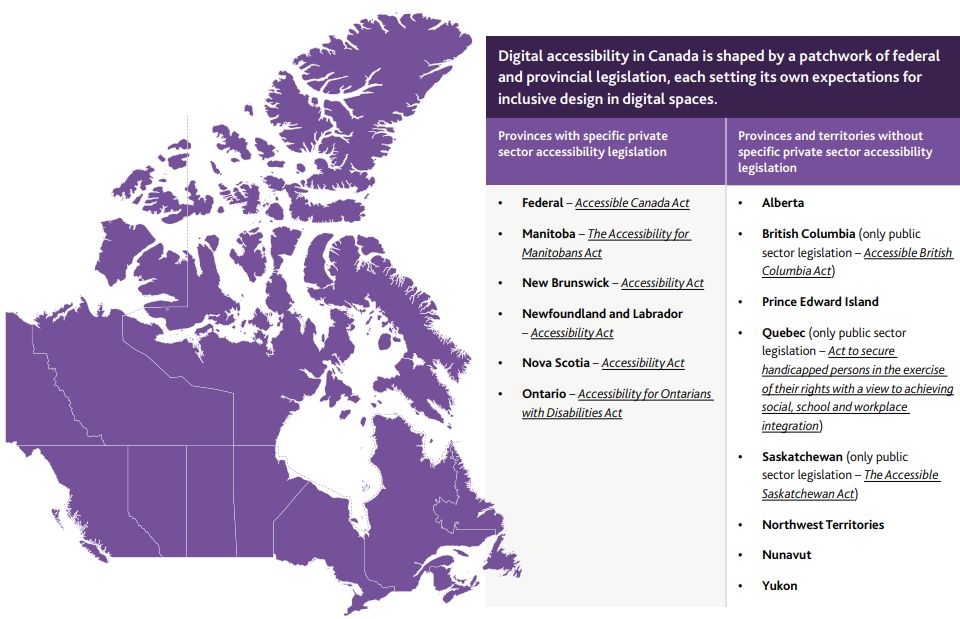- with Senior Company Executives, HR and Finance and Tax Executives
- with readers working within the Banking & Credit, Healthcare and Technology industries
Introduction
In 2022, it was estimated that 8 million Canadians have one or more disabilities that limited them in their daily activities. Over the past two decades, in an effort to reduce the persistent challenges faced by this significant portion of the population, the federal government—and many provincial governments— have introduced accessibility legislation aimed at preventing and removing barriers.
Accessibility refers to the design and delivery of environments, services, products, and information in ways that allow people of all abilities to participate fully in society. While accessibility legislation in Canada covers a broad range of areas, this article focuses specifically on laws that govern digital accessibility in the private sector. It does not address employment-related obligations or broader human rights protections. Instead, it highlights the standards most relevant to digital platforms and services.
Digital Accessibility
As digital platforms become increasingly central to how Canadians live, work, and connect, governments across Canada have enacted legislation to ensure these platforms are accessible to everyone.
Known as digital accessibility, this concept is evolving from best practice into a legal requirement. It refers to the inclusive design and development of digital technologies—such as websites, mobile apps, and electronic documents— so they can be used by all individuals, regardless of ability.
For organizations operating in the digital space, understanding and complying with these requirements is essential— not only to meet legal obligations, but to promote inclusive service delivery. In this guide, we break down the Canadian legal obligations and applicable accessibility standards.
The Canadian legal landscape

Federal level: Accessible Canada Act
Canada's federal digital accessibility regime is governed by the Accessible Canada Act ("ACA"), which came into force in 2019. The ACA aims to make Canada barrier-free by January 1, 2040, and applies to federally regulated entities, including government departments, Crown corporations, and private-sector organizations such as banks, telecommunications providers, and transportation companies.
Under the ACA, organizations must:
- Develop and publish Accessibility Plans every three years.
- Establish a process for receiving and responding to feedback on the Accessibility Plan.
- Report annually on progress made, in consultation with persons with disabilities.
To support these requirements, Accessibility Standards Canada formally adopted the European Harmonized Standard EN 301 549 (v.3.2.1) as a National Standard of Canada in May 2024 (discussed in greater detail below).
Provincial level
Several provinces have introduced their own accessibility legislation. While some have implemented laws covering both the public and private sectors, others focus solely on the public sector. A few provinces currently have no specific digital accessibility legislation in place, as outlined in the table above.
A review of the different legislation shows a priority to tackle accessibility in areas such as goods and services, employment, the built environment, accommodations, public transportation and education. However, for the purposes of this article we'll be focusing on legislation which tackles accessibility in the Information and Communication Technology ("ICT") sector.
Currently, Ontario, Manitoba, Nova Scotia, Newfoundland and Labrador, New Brunswick, British Columbia and Saskatchewan all include ICT as a thematic priority for accessibility. Alberta, Prince Edward Island, Northwest Territories, Nunavut and Yukon currently do not have specific accessibility legislation. Quebec's legislation does not refer to ICT.
To view the full article click here.
Read the original article on GowlingWLG.com
[View Source]


